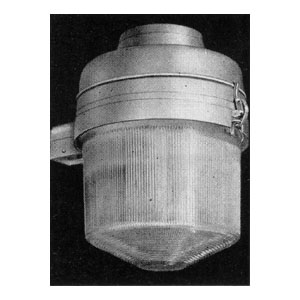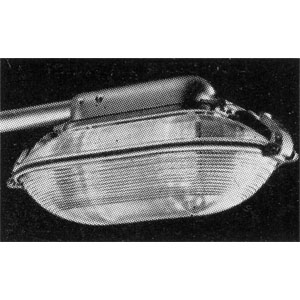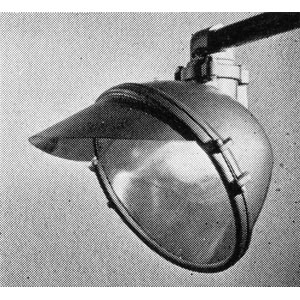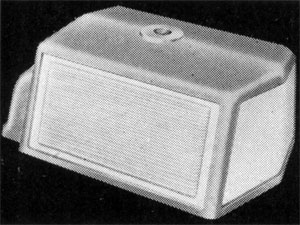ELECTRIC LIGHTING
GENERAL ELECTRIC CO., LTD., LONDON, W.C.2
With nearly all G.E.C. street lighting lanterns, the lantern bodies are die-cast from a light, rigid and resistant alloy,
the prismatic glasses are made from heat-resisting glass, and curved prisms are used in the refractors.
|
|
THE DIFRACTOR LANTERN is of the one-piece refractor bowl type, with internal
curved prisms. This lantern is used for nearly every kind of main road lighting, and will take either 250 or 400-watt
Osram HPMV lamps.
|
 |
|
THE DIOPTRION LANTERN gives a controlled cut-off form of wide distribution
and is for use on broad roads. It is designed for use with horizontal burning 250 or 400W Osram HPMV.
|
 |
|
THE UNIWAY LANTERN is designed for one-way streets or dual carriageways,
using either 80 or 125-watt Osram HPMV lamps.
|
 |
|
THE FACETED REFLECTOR LANTERN produces a directional type of lighting and is
mainly for use on Class "B" roads. There are six removable facets in each of the two wings. Lamp accommodation is
for Osram filament lamps between 60 and 200 watts or 80 and 125-watt Osram HPMV lamps.
|
|
|
THE SMALL OXFORD LANTERN is totally enclosed and designed for
use with eithter Osram filament or Osram discharge lamps of small denomination
|
|
|
THE SODIUM LANTERN FOR SIDE STREETS employs either 45 or 60-watt
Osram sodium lamps. Sealed prism refractor plates control the light distribution
up and down the road
|

|
|
THE REFRACTOR PLATE LANTERN FOR SODIUM LAMPS is designed for main
road lighting and can be used with 85 or 140-watt Osram sodium lamps.
|
|



